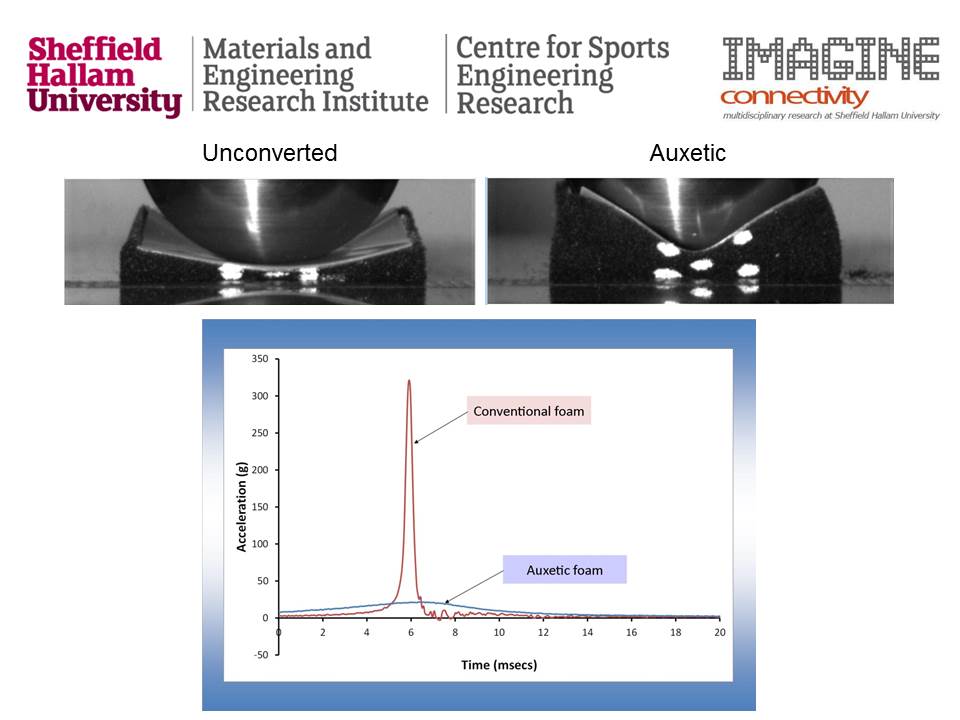Auxetic Materials for Sports Impact Protection
The global sporting equipment market is expected to reach $78.3 Billion by the end of 2017. This is a rapidly evolving sector with uptake, launch and replacement of products and technical innovations typically an order of magnitude quicker than medical or aerospace sectors, for example. Consequently, the sporting goods sector is one of the first to successfully launch commercial products based on auxetic materials technology. Auxetic materials offer performance and manufacturing benefits due to a number of enhancements over their conventional counterparts. These include increased ability to drape or conform to various parts of the body, improved indentation resistance and energy absorption characteristics.
This project is focussed on developing new and improved impact protection materials and is part of a wider collaboration with the Centre for Sports Engineering Research and also Manchester Metropolitan University. The risk of injury through impact in professional sport has been brought into sharp focus with the recent fatalities of the Argentine football player Emanuel Ortega and the Australian cricketer Phillip Hughes. A process to produce large area or volume isotropic, anisotropic and gradient one-piece auxetic foams is being developed, foams produced and characterised for their mechanical and impact response properties. Applications scenarios include as shin guards, helmets and snow-sport safety devices. Significant reductions in peak acceleration are being found for the auxetic foams relative to their conventional counterparts (Figure).
 Figure. Impact response of conventional (unconverted) and auxetic foams
Figure. Impact response of conventional (unconverted) and auxetic foams
